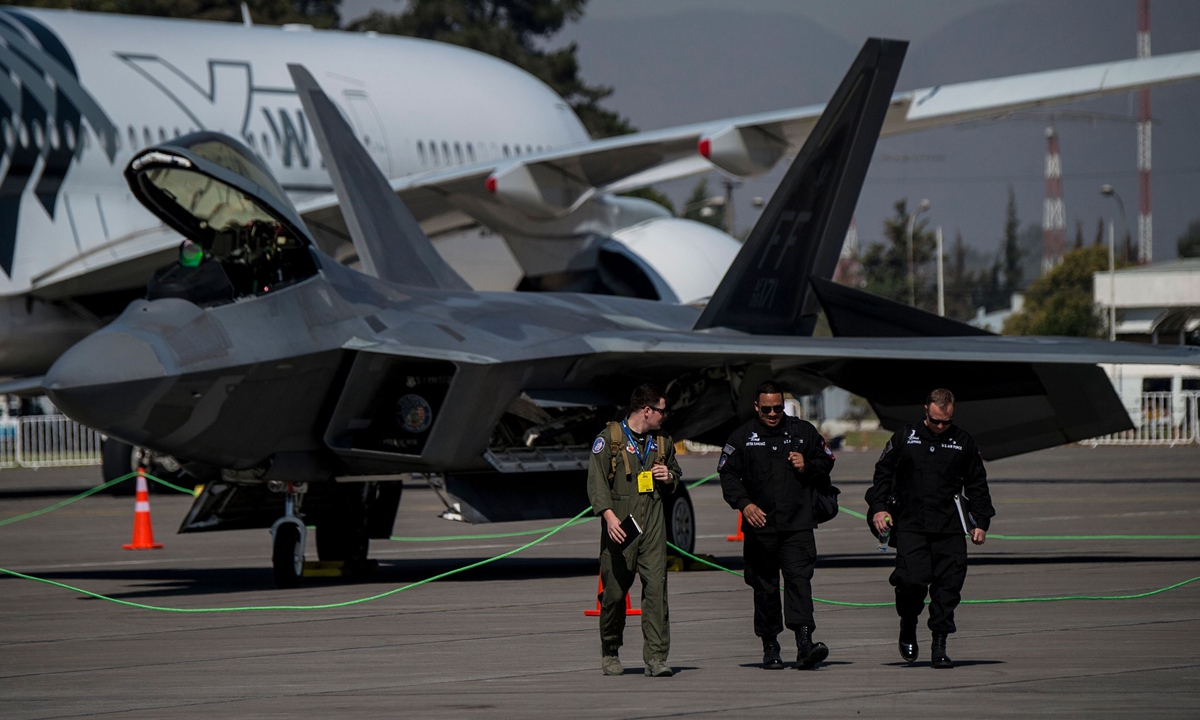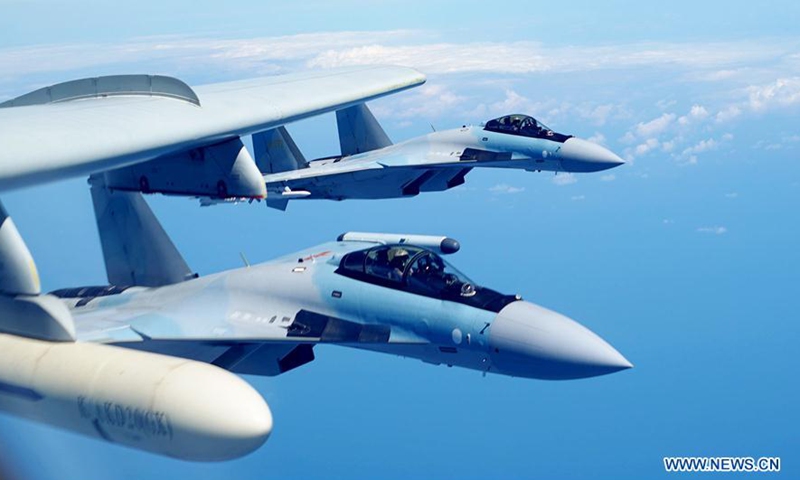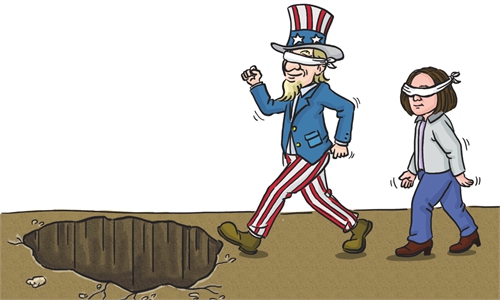US arms sales to Taiwan more ‘symbolic’ than of military value: expert
Patriot missile sites ‘first targets’ in war: expert

File photo:VCG
After stirring up tensions in the Taiwan Straits by frequently sending military aircraft and warships near the island, and meeting countermeasures by the People's Liberation Army (PLA), the US on Thursday announced the approval of yet another arms deal to Taiwan involving the recertification of air defense missiles for $620 million.
The move shows the US is advancing its plans to contain the Chinese mainland regardless of the issues it has with handling the coronavirus at home, and it will lead to more chaos and complexity to the region instead of peace and stability, Chinese mainland experts said on Friday.
The arms sales will not change the power balance across the Taiwan Straits, in which the PLA holds an overwhelming advantage, but will only give Taiwan secessionists false courage, the experts said, noting the missiles will be among the first targets to be eradicated if a military operation is needed.
The Defense Security Cooperation Agency (DSCA) of the US announced Thursday that the US State Department approved a request by Taiwan for the recertification of its Patriot Advanced Capability-3 (PAC-3) air defense missiles, at an estimated cost of $620 million.
The recertification package the US is offering Taiwan includes replacing PAC-3 components that are near expiration, testing and repairing the capability and spare parts for ground support equipment, and other logistics support, US media Defense News reported on Friday.
This marks the second time that the US has approved arms sales to Taiwan this year. The US had previously approved the sale of 18 MK-48 Mod 6 advanced technology heavyweight torpedoes to Taiwan on May 20.
Already in service, the PAC-3 air defense missiles are an important weapon in Taiwan's high-altitude defense systems, which are deployed in Taiwan's major cities and surround Taiwan's important military facilities. The PAC-3 is the most advanced model, with a maximum interception range of 70 kilometers, and maximum interception altitude of over 24 kilometers. The search range of its radar is 100 kilometers, and can track 100 targets at the same time.
According to US military contractor Lockheed Martin, the PAC-3 is capable of intercepting tactical ballistic missiles, cruise missiles and aircraft.
Yang Chengjun, a Chinese mainland expert on missile technology and nuclear strategy, told the Global Times that the arms sale is symbolic, and only gives Taiwan secessionists false courage, rather than boosts its military capabilities.
Compared to the PAC-2 air defense missiles, the preparation time required for the PAC-3 is shorter. It can finish its launch preparations in 60 minutes, and its interception chances are also improved. The interception probability has reached as high as 80 percent in some missile tests, but this data was taken under strict conditions, when the launch time, location, and flight trajectory of the targeted projectile have already been predicted, Yang said.
Yang pointed out that if the Chinese mainland decides to use force to reunify with Taiwan, the PAC-3 will not be useful since the specific time and location of our missile launches are unpredictable. The mainland will deploy a combination of military means, such as air and water raids. "At the moment, the Chinese PLA's conventional missiles can be used for mobile operations, and their launch preparation time is very short, meaning the PAC-3 could not react in time. Considering their success rate of launch and limitations to interception, there is a much more symbolic meaning to the arms sales, rather than actual military value," Yang said.
Yang added that if the Chinese mainland decides to reunify with Taiwan by force, it will be a comprehensive application of multiple means, rather than just missiles. The armed forces, including the navy, army and air force, will all attack. That means Taiwan may need to buy at least 30,000 PAC-3 missiles.
Nevertheless, the PAC-3 systems will possess a certain level of threat to PLA aircraft and could intercept some missiles, so they will likely be some of the first targets to be destroyed in a potential military operation, analysts said.
Beijing-based military expert Wei Dongxu told the Global Times on Friday that by selling overpriced arms to Taiwan, the US has three evil intentions: create trouble between the Chinese mainland and Taiwan island (to contain China), use Taiwan's military as a shield to block PLA missiles for US fleets, and earn dirty money for US arms firms.

File photo:Xinhua
Rising tensions
The US arms sales announcement came after the US frequently sent military aircraft and vessels to and near Taiwan since June.
In an apparent response, the PLA also frequently conducted warplane sorties near Taiwan. Multiple types of PLA warplanes, and Su-30 and J-10 fighter jets, Y-8 special mission aircraft, and H-6K bombers were involved.
For these, the Taiwan Straits was listed as a region with a deteriorating situation by the International Crisis Group.
This has led to discussions by observers on whether a reunification-by-force operation by the PLA is on the horizon.
After the national security legislation for Hong Kong, the US realized it had lost the Hong Kong card to contain China, so it has shifted its focus and allocated more resources to the Taiwan card, analysts said.
Fears of a regional military conflict in the Taiwan Straits looms large because of provocative and aggressive actions by the US and Taiwan secessionists, and while the Chinese mainland is willing to find peaceful solutions to the Taiwan question, it has never waived the choice of unifying with Taiwan by force and has been treating it as a main strategic mission objective of the PLA, analysts said, noting the responsibility lies in the US and Taiwan secessionists to stop provocations and de-escalate the situation.
Wei said that secessionist forces in Taiwan island rely on the US to achieve their goal of secession, and the US might also further show off its military presence by sending reconnaissance aircraft, anti-submarine aircraft and warships, or even aircraft carriers to locations near Taiwan. But the PLA has the capability and confidence to safeguard peace and stability in the region and stop any foreign military intervention, Wei said.
Also on Thursday, the DSCA approved a planned purchase by Japan for 105 F-35 joint strike fighters worth $23 billion.
Li Haidong, a professor at the Institute of International Relations of the China Foreign Affairs University, told the Global Times on Friday that US arms sales to Taiwan and Japan happen regularly. "The special thing about this year is that US perception of China's threat is more urgent than ever. The fact that the US arms sales arrangement happened as scheduled amid the pandemic shows that it is speeding up its plans to contain China."
Li believes the political intentions of the US are apparent: it plans to strengthen its regional alliance's confidence in its ability to ensure security. Thus, the US, Japan and Taiwan have gradually formed a military companionship with which the US expects to strangle the Chinese mainland's development.
Li said he believes US military plans in the region will have a limited impact on the military balance in East Asia. The arms sale exposes why the US plays up the PLA's military drills in the South China Sea and East China Sea: it hopes to make Japan and Taiwan more dependent on it by hyping the threat of the Chinese mainland.
"In the future, the US may further expand its arms sales to Japan and Taiwan to achieve what the US believes is sufficient to constrain the Chinese mainland's military development," Li said.
Li considers it meaningless whether the US sells arms to Japan or Taiwan; it cannot change the Chinese mainland's dominant position in the region. In other words, its underhanded dealings with Japan and Taiwan will only end up with the region becoming more complicated and chaotic. It will not help the US realize its goal of containing China, Li said.



